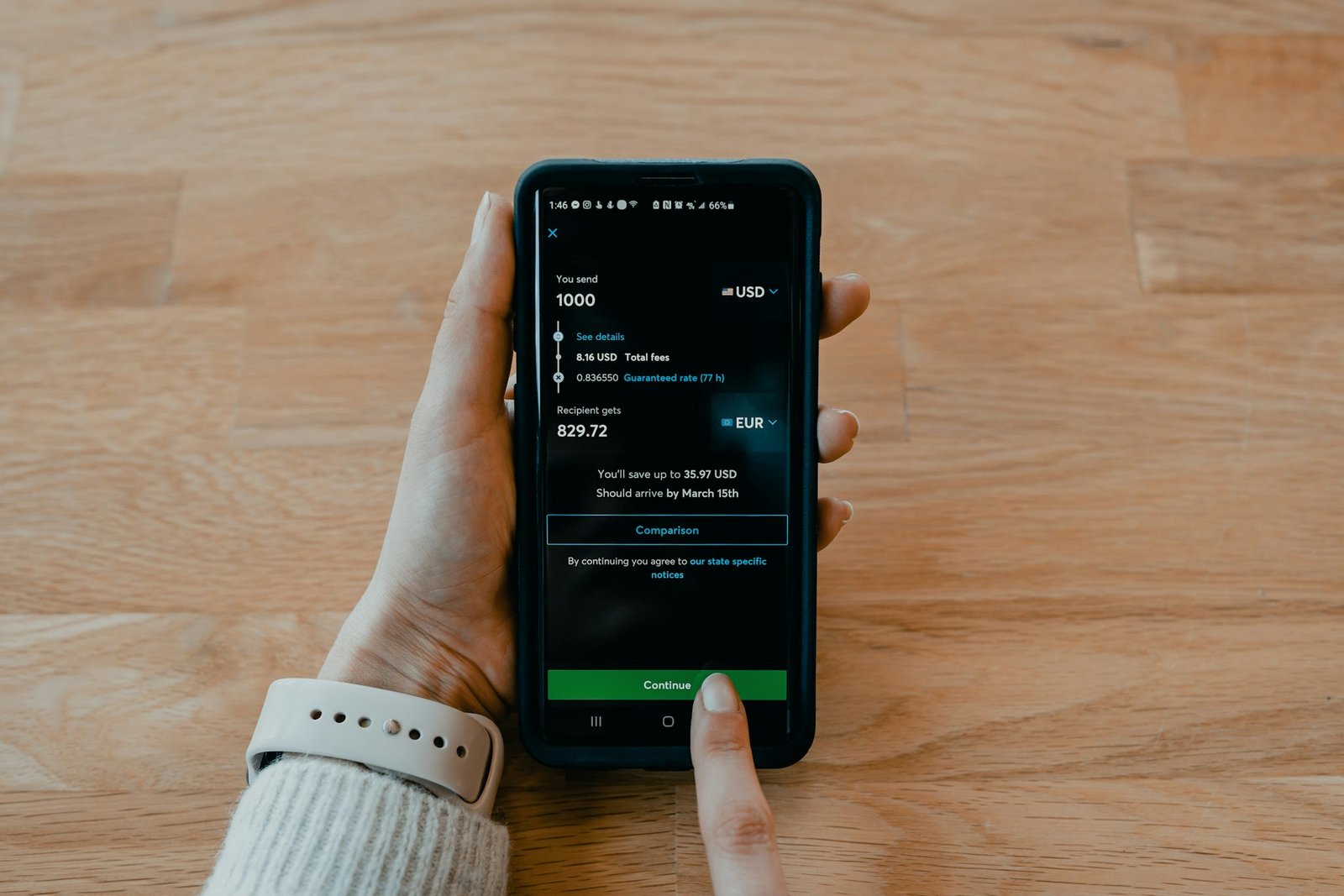The appeal of the digital nomad lifestyle promises freedom, adventure, and professional autonomy. Yet, beneath the surface of exotic landscapes and flexible work schedules lies a complex financial reality that traditional banking systems often fail to address adequately. For those living across borders, managing money transcends simple budgeting; it demands a sophisticated understanding of multi-currency transactions, efficient international transfers, and the intricate web of global tax obligations. Without a robust financial compass, nomads risk losing significant chunks of their hard-earned money to fees, facing legal headaches, or simply struggling to manage their daily finances across diverse economic landscapes. This guide aims to equip you with the knowledge to navigate these waters with confidence, ensuring your financial foundation is as resilient as your wanderlust.
1. The Digital Nomad’s Unique Financial Landscape
Unlike traditional residents with fixed salaries and local bank accounts, digital nomads operate in a perpetually shifting financial environment. This inherent mobility introduces a set of distinct challenges that require proactive solutions.
Why Traditional Banking Falls Short
Most conventional banks are designed for a localized customer base. Their services are optimized for domestic transactions, and they typically impose hefty fees for international wire transfers, foreign currency conversions, and ATM withdrawals abroad. Relying solely on a traditional bank account can lead to:
- Exorbitant Conversion Fees: Every time you spend in a local currency different from your home account, you might incur significant conversion markups.
- High International Transfer Costs: Sending or receiving money across borders via traditional banks is often slow and expensive, eating into your income.
- ATM Withdrawal Fees: Repeatedly withdrawing cash in foreign countries can result in multiple charges from both your home bank and the local ATM provider.
- Lack of Local Presence: Without a physical branch or local infrastructure, resolving issues while abroad becomes a logistical nightmare.
The Core Financial Challenges of Nomad Life
- Fluctuating Currencies: Dealing with multiple currencies means constant vigilance against exchange rate volatility, which can impact your income and expenses.
- Receiving International Payments: Clients may be in different countries, requiring efficient and cost-effective ways to get paid.
- Paying International Bills: Rent, subscriptions, and services often require payments in various currencies.
- Navigating Diverse Tax Jurisdictions: Understanding where you owe taxes, how to declare income, and avoiding double taxation is arguably the most complex financial hurdle.
2. Navigating Multi-Currency Accounts: Your Global Wallet
Multi-currency accounts are arguably the most essential tool for any digital nomad. They allow you to hold, send, and receive money in various currencies, minimizing conversion fees and simplifying international transactions.
What Multi-Currency Accounts Offer
These accounts function like a digital wallet where you can maintain balances in multiple currencies simultaneously. For example, you might have sub-accounts for USD, EUR, GBP, AUD, and more, all linked to a single main account. When you receive money in a particular currency, it’s deposited directly into that currency’s balance. When you spend, the account uses the relevant currency balance, or converts at mid-market rates if you don’t have that specific currency.
Key Benefits for Nomads
- Reduced Conversion Fees: By holding local currencies, you avoid repeated conversion charges every time you make a purchase or receive a payment. Conversions are typically done at or very close to the mid-market rate.
- Seamless International Payments: Pay for local services, rent, or goods directly in the local currency without extra hassle.
- Easier Client Payments: Clients can pay you in their local currency, and the funds land in the corresponding currency balance, avoiding a double conversion.
- Local Bank Details: Many providers offer local bank details (e.g., a UK sort code, an EU IBAN, a US account number), making it feel like you have a local bank account in various regions.
- Budgeting in Local Currency: Simplifies tracking expenses in the currency you’re actually spending.
Top Providers and How to Choose
When considering a multi-currency account, look at providers that specifically cater to international users:
- Wise (formerly TransferWise): Arguably the most popular choice for nomads. Offers multi-currency accounts with local bank details for numerous currencies (USD, EUR, GBP, CAD, AUD, etc.), excellent mid-market exchange rates, and a user-friendly debit card.
- Revolut: Another strong contender, offering similar multi-currency features, budgeting tools, and an appealing app interface. Some users appreciate its budgeting features and crypto options.
- N26: A mobile-first bank popular in Europe, offering multi-currency features for euro-denominated accounts and good international transfer capabilities.
- Other Options: Depending on your base country, traditional banks might offer premium multi-currency accounts, but often with higher fees or stricter residency requirements.
When making your choice, consider:
- Supported Currencies: Do they cover the currencies you regularly use or expect to use?
- Fees: Look beyond just conversion rates – check ATM withdrawal limits, transfer fees, and monthly maintenance charges.
- Card Options: Is a widely accepted debit card (Visa/Mastercard) included? Are there physical and virtual card options?
- Integrations: Does it integrate well with payment platforms or accounting software you use?
- Customer Support: Is their support accessible and reliable when you’re in different time zones?
For a deeper dive into selecting the right financial partner, exploring resources like Best Bank Accounts for Digital Nomads can provide detailed comparisons and insights tailored specifically to the unique needs of a location-independent lifestyle.
3. Mastering International Remittance & Transfers
Sending and receiving money across borders is a daily reality for many nomads. Efficient remittance strategies can save you hundreds, if not thousands, of dollars annually in fees and unfavorable exchange rates.
The Need for Smart Transfers
You’ll encounter various scenarios:
- Receiving Income: Getting paid by clients in different countries.
- Sending Money Home: Transferring earnings back to your home country for investments or family support.
- Paying International Bills: Rent, subscriptions, or services in foreign currencies.
- Moving Money Between Your Own Accounts: Shifting funds between your multi-currency accounts or local bank accounts as you travel.
Traditional vs. Modern Methods
- Traditional Bank Wires: Often slow (3-5 business days) and expensive, with hidden fees in the exchange rate. Not ideal for frequent, small transfers.
- PayPal: Convenient for certain transactions but notorious for high conversion fees and withdrawal charges when moving money to a bank account.
- Specialized Online Services: This is where modern solutions shine.
Efficient Transfer Services
- Wise (formerly TransferWise): Still the gold standard. Offers transparent, low-cost international money transfers using the real mid-market exchange rate. Funds typically arrive quickly, often within hours. Excellent for both personal and business transfers.
- Revolut: Provides competitive exchange rates for transfers between Revolut users and to external bank accounts. Strong for inter-currency transfers within its own system.
- Remitly / Xoom / WorldRemit: These services are often geared towards specific remittance corridors (e.g., sending money from North America to Asia or Africa) and can be very competitive for those routes.
- Stripe / PayPal (for Receiving Payments): While PayPal has high transfer fees, it (along with Stripe) remains a prevalent method for clients to pay freelancers. Be aware of their fees when receiving payments in foreign currencies and plan to transfer funds out efficiently.
Tips for Smart Transfers:
- Always Compare: Use online comparison tools to check exchange rates and fees across different providers before every significant transfer.
- Batch Transfers: If possible, consolidate smaller transfers into larger, less frequent ones to reduce per-transaction fees.
- Understand Mid-Market Rate: This is the “real” exchange rate. Always compare a service’s rate to this to see the true markup.
- Automate Where Possible: Set up recurring transfers for regular payments to save time.
4. Decoding International Tax Obligations for Digital Nomads
This is often the most daunting aspect of digital nomad finance. Tax obligations can be incredibly complex, varying based on your nationality, tax residency, physical presence in different countries, and income sources. Ignoring them is a recipe for serious legal and financial trouble.
Understanding Tax Residency
Your tax residency is the country where you are legally considered to live for tax purposes. This is usually determined by factors like:
- Physical Presence: How many days you spend in a country (e.g., 183-day rule).
- Center of Vital Interests: Where your primary home, family, and economic ties are.
- Nationality: Some countries (like the U.S.) tax their citizens regardless of where they live.
It’s possible to be a tax resident of one country, a temporary resident of another, and a tourist in several more, all with different implications.
Key Tax Concepts for Nomads
- Double Taxation Agreements (DTAs): These are treaties between countries designed to prevent you from being taxed twice on the same income. They determine which country has the primary right to tax certain types of income.
- Foreign Earned Income Exclusion (FEIE): For U.S. citizens and resident aliens, this allows you to exclude a certain amount of foreign earned income from U.S. tax if you meet certain criteria (Physical Presence Test or Bona Fide Residence Test).
- Digital Nomad Visas: Some countries offering these visas have specific tax rules for visa holders. These can range from zero tax for foreign income (e.g., Georgia’s Remotely from Georgia program, specific clauses in some nomad visas) to standard local income tax.
- Permanent Establishment (PE): If you operate a business (especially as a freelancer) in a foreign country for too long, you might create a “permanent establishment,” making your business subject to that country’s corporate taxes.
- VAT/GST: If you’re selling digital products or services, you might be liable for Value Added Tax (VAT) or Goods and Services Tax (GST) in certain jurisdictions where your customers reside.
General Tax Strategies & Best Practices
- Don’t Ignore It: Burying your head in the sand is the worst strategy. Penalties for non-compliance can be severe.
- Seek Professional Advice: This is not a DIY area for most nomads. Consult with an accountant specializing in international tax for digital nomads. This investment can save you significant money and stress in the long run.
- Track Everything: Maintain meticulous records of your income, expenses, and travel dates (entry/exit stamps, flight tickets, accommodation receipts). This is crucial for proving tax residency or qualifying for exclusions.
- Understand Your Home Country’s Rules: Know your country’s tax obligations for non-residents or citizens living abroad.
- Research Destination Tax Laws: Before committing to a long-term stay in a country, research its tax implications for digital nomads, especially if it offers a specific digital nomad visa.
5. Beyond Accounts: Essential Financial Habits for the Savvy Nomad
A strong financial foundation for digital nomads isn’t just about the right tools; it’s about disciplined habits and proactive planning.
Core Financial Disciplines
- Automate Savings: Set up automatic transfers from your income-receiving account to a dedicated savings or investment account. “Pay yourself first” is even more critical when your income might fluctuate. Build an emergency fund that can cover at least 6-12 months of living expenses.
- Budget Relentlessly: Know where every dollar (or euro, or baht) goes. Use budgeting apps (e.g., You Need A Budget, Mint, NomadList’s cost of living data) to track expenses, especially across different currencies and countries. This helps you identify spending leaks and adjust your lifestyle to match your income.
- Diversify Income Streams: Relying on a single client or income source is risky. Explore multiple avenues like freelancing, remote work, passive income (online courses, e-books), or investments to create financial resilience.
- Regular Financial Reviews: Schedule monthly or quarterly financial check-ins. Review your income, expenses, savings, investments, and overall financial health. Adjust your budget and strategies as needed.
- Debt Management: Aim to minimize or eliminate high-interest debt. Traveling with significant debt can add undue financial pressure and limit your freedom.
- Understand ATM Withdrawal Limits & Fees: Different banks and locations have varying limits. Plan your cash withdrawals to minimize fees, and always check if your multi-currency card offers free withdrawals up to a certain limit.
- Credit Card Savvy: Use credit cards that offer no foreign transaction fees and good rewards for travel. Always pay off your balance in full to avoid interest. Have a backup credit card and debit card.
- Digital Record Keeping: Scan and digitize all important financial documents, receipts, and contracts. Store them securely in cloud storage (encrypted, of course) that you can access from anywhere. This is crucial for tax purposes and general financial management.
Planning for the Unexpected
Life on the road is full of surprises. While exciting, some can be financially challenging.
- Emergency Fund: This is paramount. Unexpected medical emergencies, last-minute flight changes, or a sudden loss of income can quickly derail your plans without a buffer.
- Travel Insurance: More than just medical, consider comprehensive travel insurance that covers trip interruptions, lost luggage, and emergency evacuations.
- Backup Funds: Keep a separate, accessible fund in a different account or even some emergency cash in a secure spot, just in case your primary cards are lost or stolen.
Conclusion: Charting a Prosperous Nomadic Journey
The freedom of the digital nomad lifestyle is undeniably alluring, but it’s a freedom best enjoyed on a stable financial foundation. Navigating multi-currency accounts, mastering international remittance, and diligently managing your global tax obligations are not just administrative tasks; they are essential pillars of a sustainable and prosperous nomadic career. By proactively embracing the right tools and cultivating disciplined financial habits, you transform the complexities of international finance into a clear path. This financial compass will not only save you money and stress but empower you to focus on what truly matters: experiencing the world, growing your skills, and living your most authentic, location-independent life to the fullest.







